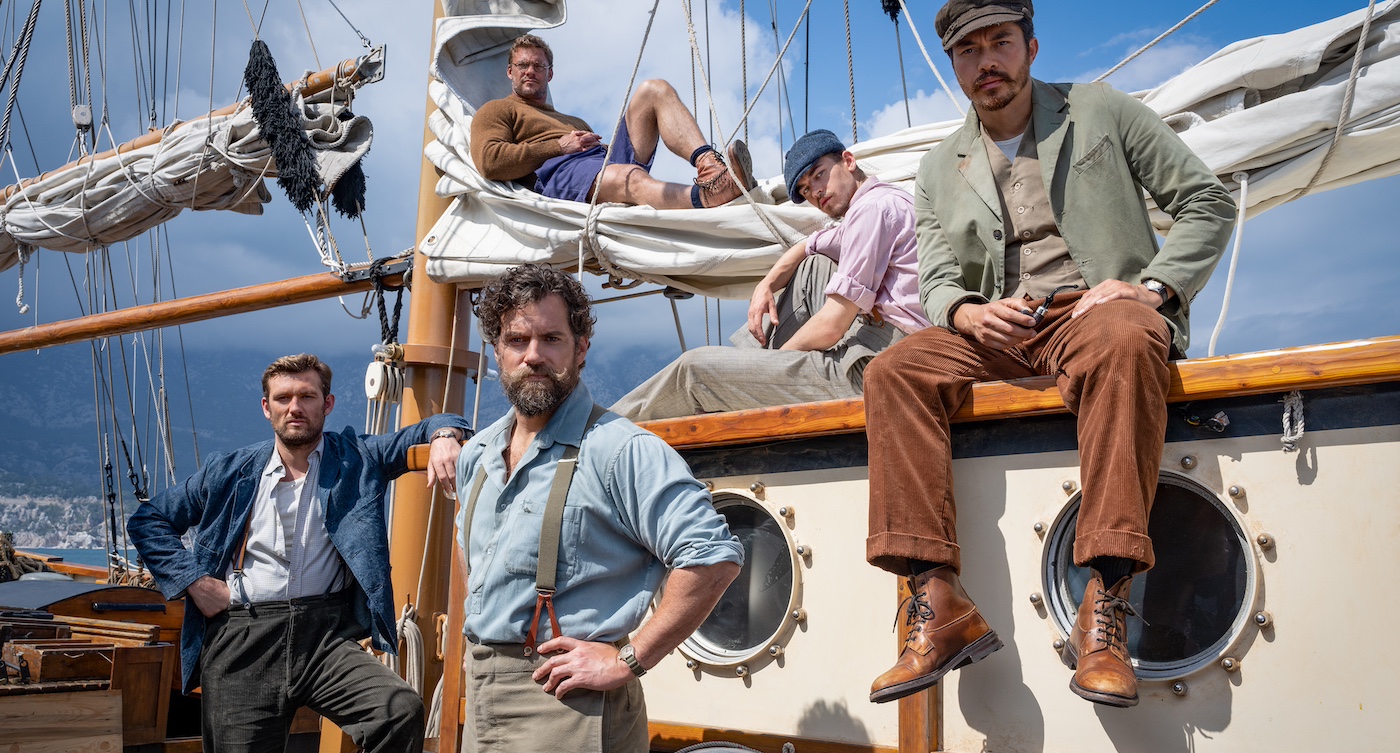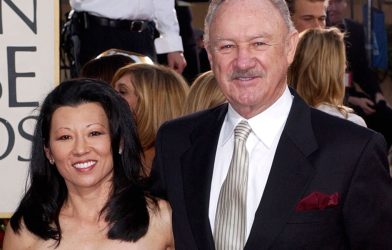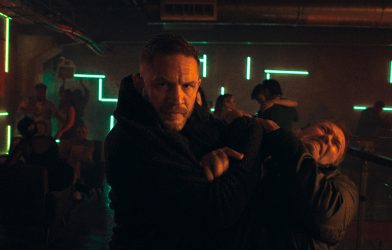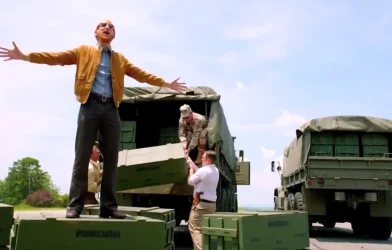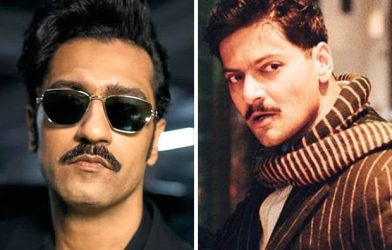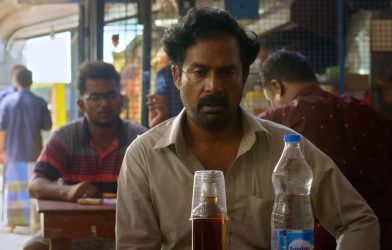Following last year’s contemplative war thriller The Covenant, director Guy Ritchie is back with a propulsive military actioner with his go-to cinematographer in recent years, Ed Wild (London Has Fallen and Ritchie’s Netflix adaptation of his own film, The Gentlemen). On his fifth collaboration with Ritchie in two years, Wild is very comfortable with the director’s fluid shooting style. “We’ve got a real rhythm for how to do things quickly. Guy likes to work in a very quick, immediate, responsive way, so the cast is in the moment.”
Adapted from Damien Lewis’ 2014 historical novel—which was based on recently declassified files from the British War Department— The Ministry of Ungentlemanly Warfare is a semi-fictionalized account of Operation Postmaster, a daring mission that helped neutralize Nazi Germany’s U-boat dominance in the Atlantic during WWII. Although the book—and indeed the historical events—were deadly serious, Ritchie wanted to apply a breezy, boisterous sensibility to the dire business of war. “From the outset, Guy did not want this to be a gritty, hard war film,” recalls Wild of the visual language needed to balance the brutality of warfare with some devil-may-care, quippy humor.
“Tonally, he was very clear—everything from costume, script, to set design—that we needed it to be visually enticing so that people knew it was okay to have some fun,” Wild says. “It’s sort of that SAS [British Special Air Service] thing that no matter the extremes, you still have that sense of humanity and fun. That sort of gallows humor is quite an English thing. So, the visual language had to allow for that humor to breathe.” To give the film a 1950s Technicolor aesthetic and glamorous sheen, he used Sony Venice 2 for its neutral density and low light capabilities, coupled with Tokina Vista lenses, “which were gentle on the skin. We wanted everyone to feel glamorous rather than gritty. A lot of it was old-fashioned three-point lighting, but with a softer wraparound light to give it that glamorous feel.”
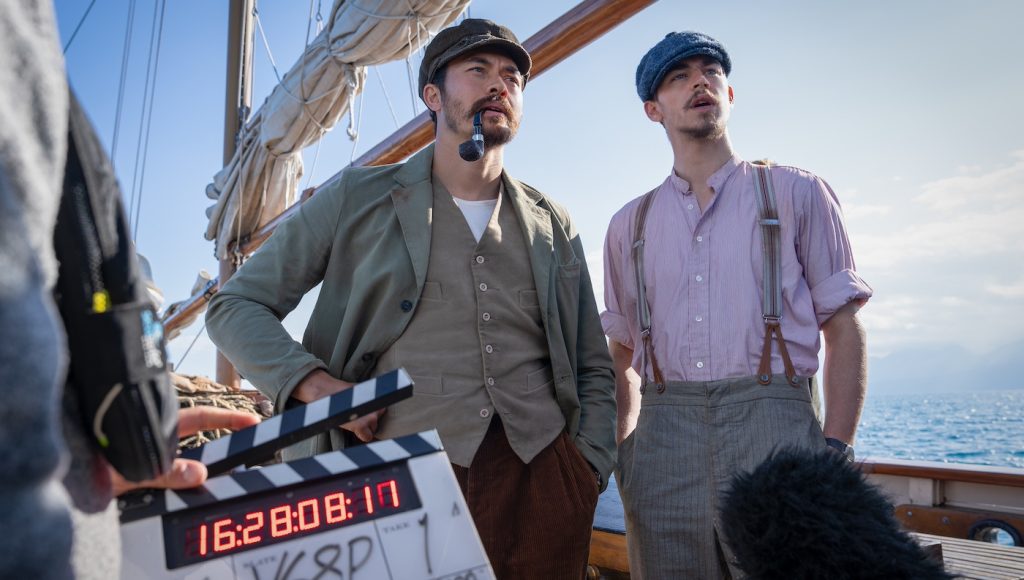

Teetering on the precipice of defeat, UK Prime Minister Winston Churchill (Rory Kinnear) formed the first clandestine combat unit tasked with deploying unconventional and “ungentlemanly” guerilla warfare tactics. Their first mission is to cut off vital supplies to the German U-boats by sinking the Italian cargo ship Duchessa d’Aosta in the port of Fernando Po in West Africa. Disguised as merchant seamen on the Brixham trawler Maid of Honor, the ragtag coterie of unruly operators is led by the effective but often insubordinate Major Gus March-Phillipps (Henry Cavill).
With the resort city of Antalya, Turkey, standing in for West Africa, Ritchie wanted to capture all of the seafaring adventures in-camera rather than turning to VFX. “We decided to do all the boat stuff for real; we didn’t want any blue screen. The interior of the boat was a set build [by production designer Martyn John], but all the top side exteriors on the boat, including all the night work, were all shot for real,” Wild shares of the ten-week shoot. For the opening sequence, they “took the flotilla six miles out into the ocean every day. There’s one camera on a crane that could shoot dialogue across the bow, and I’d operate another camera on the Maid of Honor—there was no room for anyone else. A lot of it was handheld. Our key grip, Rob Fisher, hung spring balances off a big rig, which allowed us to move the camera around fluidly.”
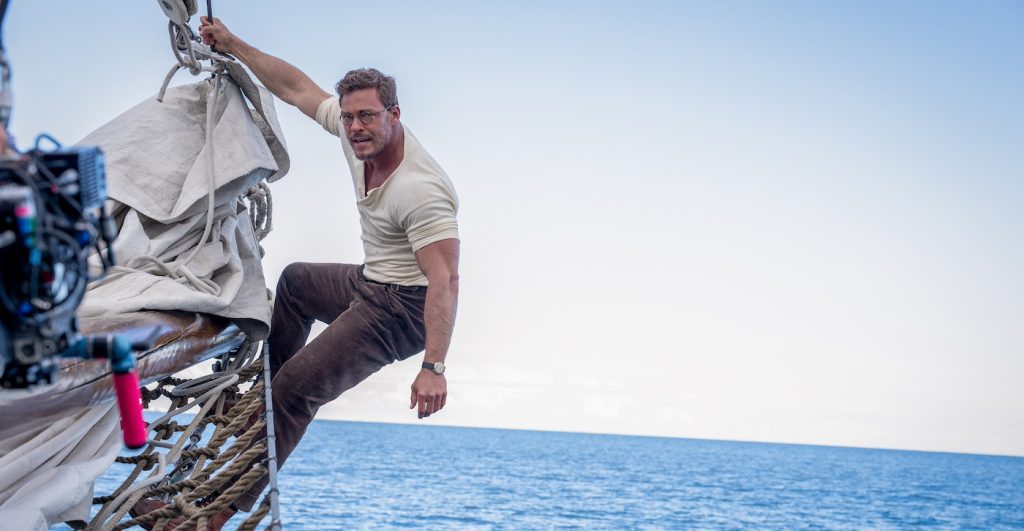

Before shooting a single frame, marine coordinator Jonjo Stickland had to get all the boats from various countries to Turkey. After finding the Maid of Honor in Holland, it had to be transported on another boat to Antalya. Securing all the period-appropriate vessels—including the German ships and the Duchessa—and getting the paperwork in time was a massive effort. “Logistically, it was a real juggle, but Jonjo had an excellent team – he supplied all the boats and the boat drivers. They really understood what we were trying to get, so we could get done really fast,” says Wild. As a national champion and Commonwealth bronze medalist in rowing, he is in a better position to fully grasp the challenges of operating on the water. “They had to line up all the boats while Pete [Wignall] operated the Steadicam, George Amos was on the B camera, and I was on the handheld. Rob built rigs that hung over the side of the boat so I could have a platform to shoot the close-ups,” he adds.
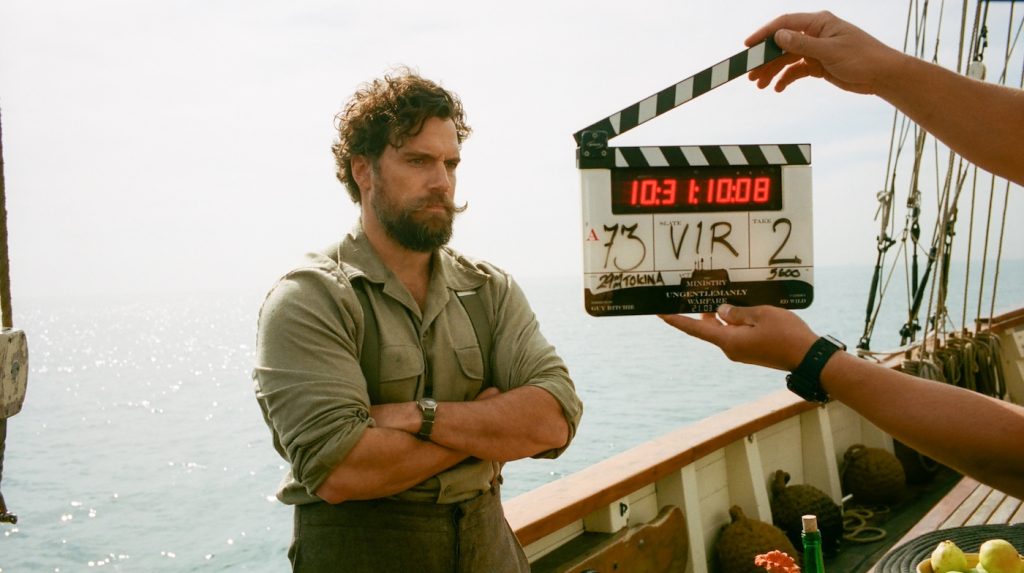

Ritchie’s fast-moving and free-flowing style capitalizes on the momentum and spontaneity of the day but also demands a lot of the crew and his actors. “There is a story structure, and there are scenes, but the focus of those scenes may change,” Wild explains. “As he starts to feel the story develop, he becomes interested in strands that are going certain ways. The dialogue is hard on the actors because what’s in the script is very rarely what’s said in the film. They’ll do a block in the morning and often change the dialogue quite significantly.”
One such example turned out to be Wild’s favorite bit in the film—when undercover agent Marjorie Stewart (Eiza González) is tasked with seducing the main Nazi baddie at a costume party to distract everyone on shore while Gus’ crew attempts to sink the Duchessa. Although the script had her singing a sultry version of “Mack the Knife” in English, Ritchie figured out on the day that it would need to be done in German instead—and with a specific accent on a few keywords in the lyrics—to deliver a crucial turning point in the story. “That’s Guy. It’s brilliant for the plot and rhythm of the story, but everything can change very quickly.”
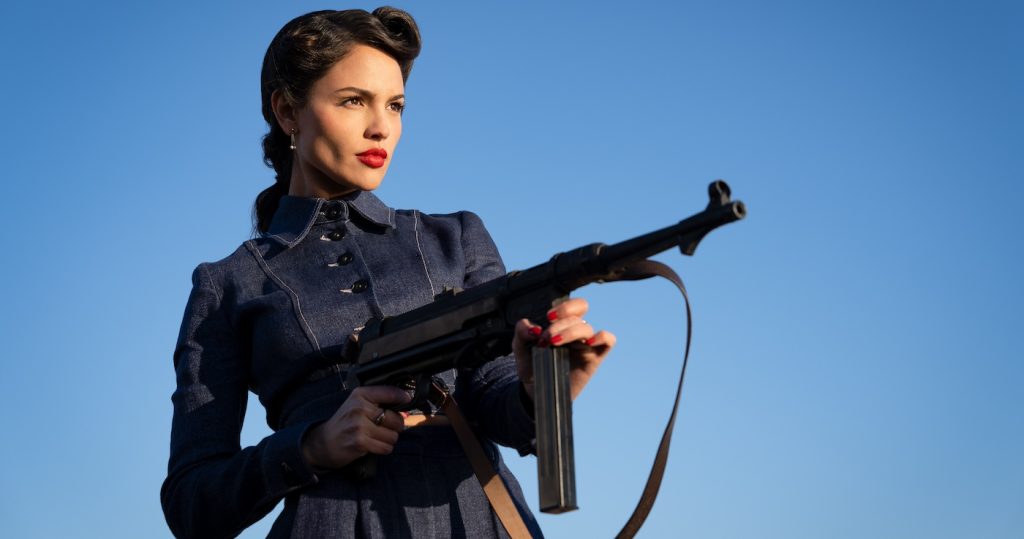

Wild credits his background in documentary filmmaking for being able to adapt to whatever the day may bring. “You figure out quickly where to put the camera with relationship to the light to get the best shot, and not to fight the scene. As a DoP, you don’t try to impose a vision with a shot that you’ve always wanted. You have to respond to how the scenes evolve. The great thing about Guy is he’s pragmatic about everything, so he doesn’t over-obsess about a shot. If you haven’t got what he needs because something’s changed, he can bend it and change it into something else.”
Check back tomorrow for the conclusion of our discussion, where Wild reveals what happened when they had one shot to capture the climactic explosive ending during a night shoot with severe weather in the last week of production.

